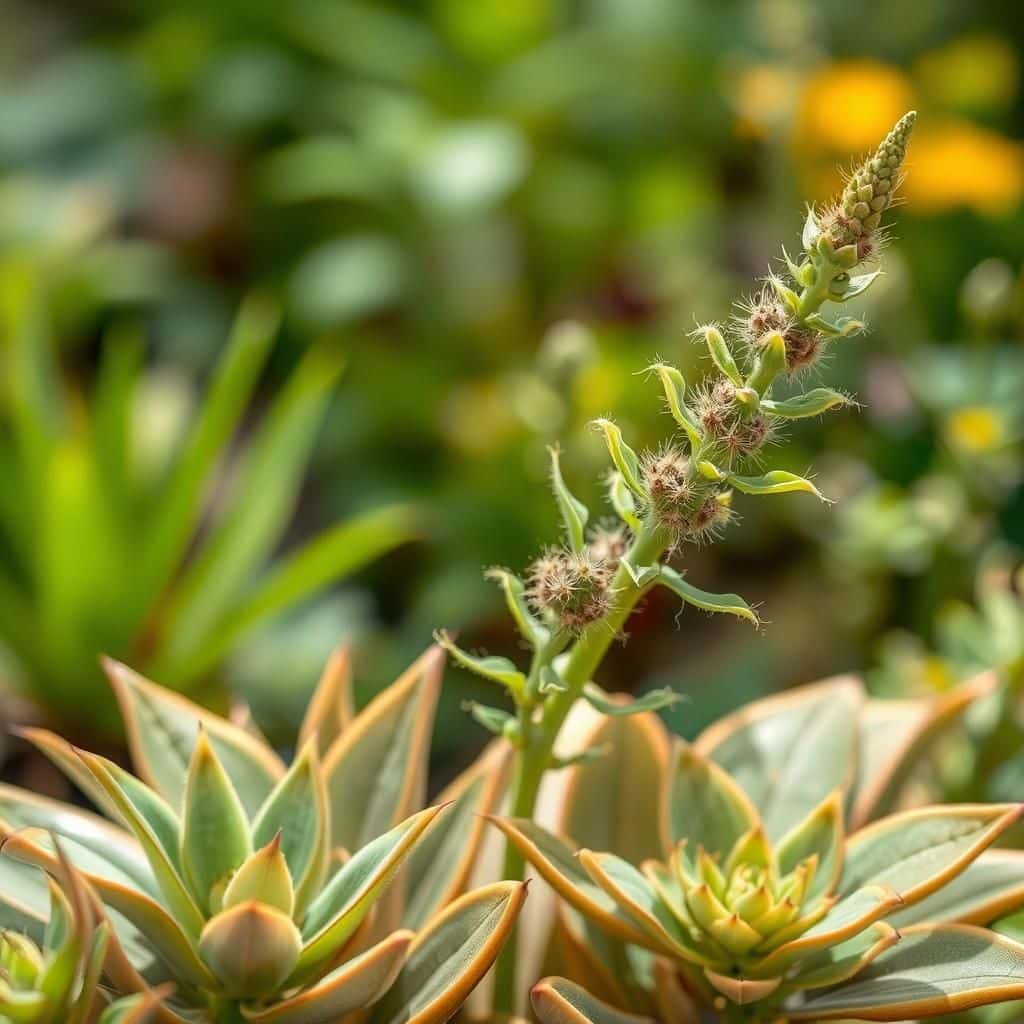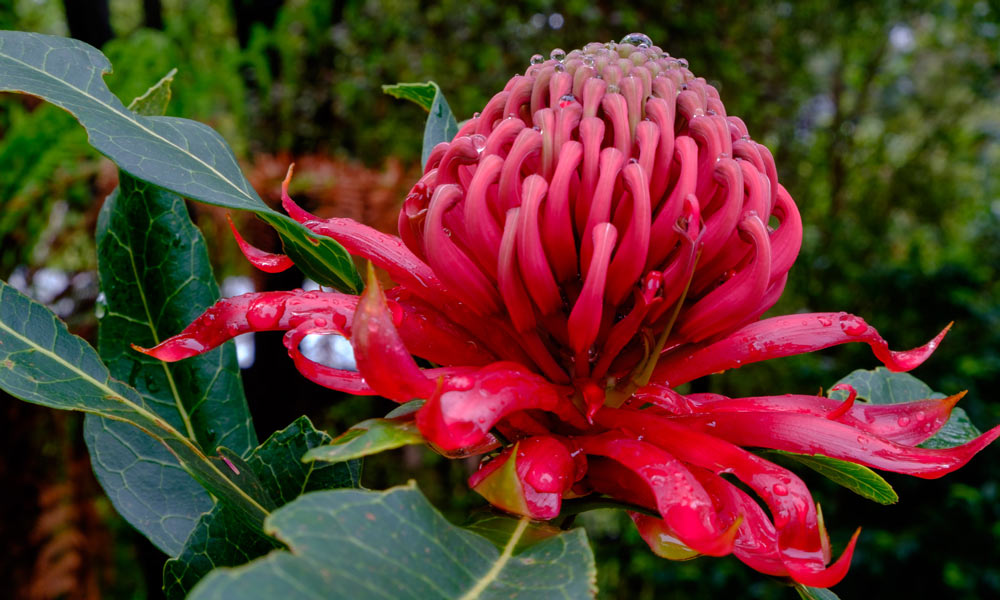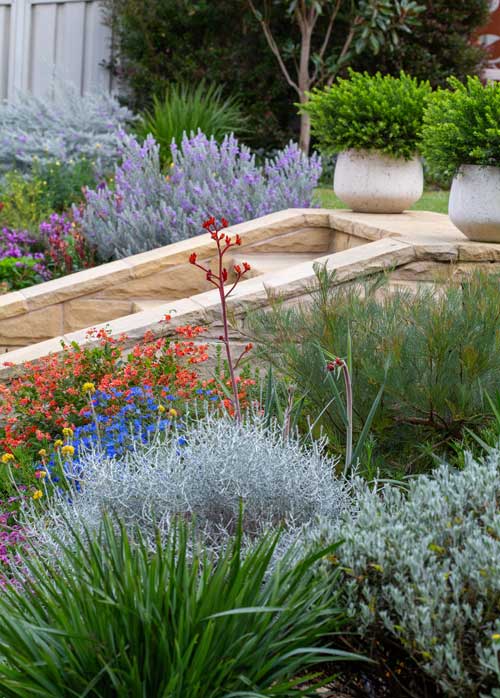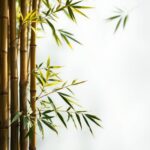Discover the Best Native Plant Nursery Perth for Your Gardening Needs

Perth, known for its diverse ecosystems and stunning landscapes, is also a hub for native plants that thrive in the region's unique climate. For gardening enthusiasts, finding the best native plant nursery is essential to creating a vibrant and sustainable garden. In this article, we will guide you through some of the top native plant nurseries in Perth, highlighting their specialties, offerings, and what makes them stand out. Whether you're looking to enhance your garden's biodiversity or simply want to bring a touch of local flora into your home, these nurseries provide the perfect starting point for all your gardening needs.
The Best Native Plant Nurseries in Perth
Perth boasts a variety of great native plant nurseries that cater to both avid gardeners and environmentally conscious homeowners. These nurseries specialize in local flora, offering a range of plants that thrive in the unique Australian climate. Customers can find anything from bush tucker plants to vibrant wildflowers that attract local wildlife, making these nurseries a perfect choice for anyone looking to create a sustainable garden. Additionally, many of these establishments provide valuable resources such as gardening advice, workshops, and community events focused on promoting biodiversity and conservation efforts within the region.
What to Look for in a Native Plant Nursery
When searching for the best native plant nursery, it’s essential to consider factors such as plant selection, expertise of staff, and environmental practices. A reputable nursery should offer a diverse range of native species that are well-suited to the local climate and soil conditions. Knowledgeable staff can provide guidance on plant care and selection, ensuring that customers make informed choices. Additionally, nurseries that prioritize sustainability and eco-friendly practices are often a better choice, as they contribute positively to the environment and support local ecosystems.
Top Native Plant Nurseries in Perth
Several native plant nurseries in Perth stand out for their extensive selection and commitment to quality. Kings Park Nursery, for example, is renowned for its vast array of local species and educational programs. Others, like Australian Native Plants and The Wildflower Society of Western Australia, offer specialized plants and resources for those interested in fostering WA's natural beauty. Each of these nurseries provides a unique shopping experience and expert advice, ensuring customers have access to the best options for their gardening needs.
Benefits of Shopping at Native Plant Nurseries
Choosing to shop at native plant nurseries comes with numerous benefits, not only for the individual gardener but also for the local environment. Native plants are generally more resilient to local pests, diseases, and climate conditions, requiring less maintenance and fewer chemicals. Furthermore, these plants support local wildlife, providing food and habitat for birds, insects, and other beneficial species. By shopping at native nurseries, customers are helping to preserve the biodiversity of the region and making a positive impact on the ecosystem.
Community Events and Workshops
Many native plant nurseries in Perth host community events and workshops that aim to educate the public about the importance of native flora and sustainability practices. These events often cover topics such as native gardening techniques, plant propagation, and landscape design with native plants. Participating in these workshops not only enhances one’s gardening knowledge but also fosters a sense of community and collaboration among local gardeners, promoting a collective effort towards environmental conservation.
How to Care for Native Plants
Caring for native plants involves understanding their specific needs, including sunlight, soil type, and water requirements. Most native plants thrive in well-drained soils and often prefer minimal water once established, making them ideal for low-maintenance gardens. It's crucial to monitor their growth and provide the necessary nutrients during peak growing seasons. Utilizing mulch to retain moisture and suppress weeds can be beneficial, as well as planting in groups to mimic their natural environments. By following these care guidelines, gardeners can enjoy flourishing native plants that enhance their landscapes.
| Nursery Name | Location | Specialties |
|---|---|---|
| Kings Park Nursery | Kings Park | Local species, educational programs |
| Australian Native Plants | Various locations | Specialized native flora |
| Wildflower Society of WA | Leederville | Conservation and education |
What is the most beautiful Australian native plant?

The most beautiful Australian native plant is often considered to be the Waratah (Telopea speciosissima). This striking flower is renowned for its vibrant red blooms, which can reach up to 20 centimeters in diameter. The Waratah is not only admired for its stunning appearance but also holds cultural significance for Indigenous Australians.
Characteristics of the Waratah
The Waratah is a large shrub that can grow up to 4 meters high, featuring leathery green leaves. Its most distinct feature is its enormous flower heads composed of numerous small florets. The bloom period typically occurs in spring, becoming a vivid display in gardens and wild landscapes alike.
- Height: The plant can grow between 1 to 4 meters tall.
- Color: It is predominantly known for its striking bright red flowers.
- Leaf Structure: Leaves are dark green and glossy, adding to its visual appeal.
Habitat and Distribution
Waratahs are predominantly found in the southeastern regions of Australia, particularly in New South Wales. They thrive in forest and heathland environments, often in areas with well-drained soils. Their ability to survive in diverse conditions makes them resilient and adaptable.
- Natural Range: Native to the eastern part of Australia.
- Soil Preference: Prefers sandy and loamy soils with good drainage.
- Climate: Grows best in a temperate climate with moderate rainfall.
Cultural Significance
The Waratah is a symbol of strength and resilience for many Indigenous Australian cultures. It is featured in various artworks and stories, symbolizing the beauty of the natural world. Additionally, it was adopted as the floral emblem of New South Wales in 1962, further cementing its cultural importance.
- Indigenous Symbolism: Represents growth and strength.
- Artistic Depictions: Commonly found in Indigenous art and storytelling.
- Official Emblem: Designated the state flower of New South Wales.
Growing Waratahs in the Garden
Waratahs can be cultivated in gardens with appropriate care. They prefer full sun to partial shade, with regular watering to establish roots. Proper fertilization and pruning can enhance their growth and flowering potential.
See also:
- Sunlight: Requires at least 6 hours of sunlight daily.
- Watering: Keep the soil moist during the first few years.
- Fertilization: Use low-phosphorus fertilizers to avoid damaging the plant.
Conservation Efforts
Due to its popularity, the Waratah has faced threats from habitat loss and over-collection. Conservation initiatives are in place to protect its natural habitats and promote sustainable practices among gardeners and collectors. Education about the importance of preserving native plants is essential.
- Habitat Preservation: Efforts to protect natural habitats from urban development.
- Regulation of Collection: Strict laws against the over-collection of wild plants.
- Awareness Campaigns: Programs to educate the public about the importance of native flora.
What is the best time of year to plant Australian natives?

The best time of year to plant Australian natives largely depends on the specific region and climate conditions, but generally, the ideal time is during the spring and autumn months. These seasons provide optimal weather for planting, allowing the plants to establish their roots before the harsher conditions of summer or winter set in.
Spring Planting
Planting Australian natives in spring is advantageous because the weather is gradually warming, and there is generally more rainfall. This helps in the establishment of young plants.
- Soil Temperature: Spring offers progressively warming soil temperatures, enhancing germination and growth rates.
- Moisture Levels: Increased rainfall in many regions during spring provides sufficient moisture to help newly planted natives thrive.
- Longer Days: With longer daylight hours, plants benefit from increased photosynthesis, supporting better growth.
Autumn Planting
Planting in autumn can also be a great option, particularly in warmer areas. The cooling temperatures provide a more stable environment for young plants.
- Root Development: During autumn, plants can focus on establishing their root systems before the summer heat arrives.
- Reduced Pests: There is often a decrease in pest activity during autumn, allowing young plants to grow with less competition and damage.
- Moisture Retention: Autumn often has increased moisture, which can be beneficial for new plants facing the upcoming dry summer.
Regional Considerations
The best planting time can vary significantly depending on the region. Understanding your area's climate is crucial.
- Coastal Areas: In coastal regions, spring is typically the best time due to milder temperatures and increased rainfall.
- Inland Areas: In hotter, inland zones, autumn planting may be more effective to avoid extreme summer heat.
- Tropical Regions: In tropical climates, consider the wet season, which provides ample moisture for planting.
Soil Preparation
Before planting, proper soil preparation is essential to ensure the success of your Australian natives. This involves assessing and improving the soil conditions.
- Testing Soil Quality: Conducting soil tests can help determine pH and nutrient levels, guiding necessary amendments.
- Adding Organic Matter: Incorporating compost or well-rotted manure enhances soil fertility and structure.
- Drainage Improvement: Ensuring good drainage is vital, as many Australian natives prefer well-drained soils.
Watering Requirements
Understanding the watering requirements of Australian natives is key for successful planting and establishment.
- Initial Watering: Newly planted natives require frequent watering to establish roots, particularly in their first few months.
- Deep Watering: Once established, many Australian natives are drought-tolerant and benefit from deep watering less frequently.
- Monitoring Rainfall: Keeping track of rainfall will help in adjusting watering schedules to avoid over- or under-watering.
What are the best Australian natives for garden beds?

The best Australian natives for garden beds are species well-suited to local conditions and environment. These plants are not only beautiful but also resilient, providing ecological benefits such as supporting local wildlife. Here are some excellent options for your garden:
1. Kangaroo Paw (Anigozanthos)
Kangaroo Paw is an iconic Australian native known for its unique, colorful flowers that resemble the paw of a kangaroo. This plant thrives in well-drained soil and full sun, making it an excellent choice for garden beds.
- Varieties include Kangaroo Paw 'Bush Gems' and 'Felix'
- Attracts a range of pollinators such as bees and birds
- Requires minimal water once established
2. Australian Fuchsia (Correa)
Australian Fuchsia plants are versatile and can adapt to various conditions, making them perfect for gardens. With their lovely tubular flowers, they not only enhance garden aesthetics but also attract birds.
- Provides wonderful year-round foliage
- Prefers partial shade to full sun
- Suitable for containers and borders
3. Bottlebrush (Callistemon)
Bottlebrush plants are notable for their striking brush-like flowers, which bloom in various colors. They are hardy and thrive under various conditions, adding a vibrant touch to any garden bed.
See also:
- Different species such as Callistemon citrinus are popular for their showy blossoms
- Resilient against drought and pests
- Excellent for attracting birds and beneficial insects
4. Wattles (Acacia)
Wattles are an essential part of the Australian landscape, known for their bright yellow flowers and distinctive foliage. These fast-growing plants can create a stunning display in any garden setting.
- Different species provide diverse growth habits and flower types
- Typically low-maintenance and drought-tolerant
- Root systems can help improve soil quality
5. Tea Tree (Leptospermum)
Tea Trees are attractive shrubs or small trees that feature delicate blossoms and aromatic foliage. They are ideal for various garden beds, providing both beauty and functional benefits.
- Used in herbal medicine and skin care for their oil
- Can be shaped as hedges or left to grow naturally
- Supports local ecosystems by attracting native fauna
What plants are easy to grow in Perth?

Perth enjoys a Mediterranean climate characterized by hot, dry summers and mild, wet winters, making it ideal for a variety of plants that thrive in these conditions. Here are some plants that are easy to grow in Perth:
Native Australian Plants
Native plants are particularly suited to Perth's climate, requiring minimal water and maintenance. They are adapted to the local conditions and attract wildlife, such as birds and butterflies. Some notable ones include:
- Western Australian Mallee - drought-resistant and versatile, often used in gardens.
- Grevillea - a flowering shrub that attracts pollinators with its vibrant blooms.
- Banksia - known for its unique flowers and ability to tolerate poor soils.
Succulents and Cacti
Succulents and cacti are an excellent choice for Perth gardens due to their minimal water requirements. They thrive in sunny environments and are perfect for those wanting low-maintenance plants. Consider these options:
- Aloe Vera - not only decorative but also has medicinal properties.
- Agave - a striking plant that requires little care and can tolerate drought.
- Echeveria - rosette-shaped succulents that come in various colors, perfect for pots.
Herbs
Growing herbs in Perth can be rewarding as they can be used in cooking and are generally easy to maintain. Many herbs thrive in sunny spots and can handle the local climate. Popular choices include:
- Basil - a fast-growing herb that flourishes in warm weather.
- Rosemary - drought-tolerant and perfect for Mediterranean dishes.
- Thyme - hardy and resilient, works well in gardens or containers.
Flowering Perennials
Perennial flowers can add color and life to your garden year-round. Many perennials are well-suited to Perth’s conditions and can withstand dry spells. Here are some attractive options:
- Lavender - fragrant and drought-resistant, perfect for borders.
- Catmint - beautiful blooms and attracts beneficial insects.
- Salvia - vibrant colors that thrive in hot climates, ideal for garden beds.
Fruit Trees
Planting fruit trees in Perth can be a delightful experience, as many varieties are well-suited for the region. With proper care, they can produce delicious fruits with minimal effort. Consider these varieties:
- Fig - well-adapted to dry heat and requires little water once established.
- Lemon - thrives in sunny locales, providing fruit throughout the year.
- Pomegranate - drought-resistant and offers beautiful flowers and fruits.
Questions from Our Readers
What is the best native plant nursery in Perth?
The best native plant nursery in Perth often depends on individual preferences, but many locals recommend Kings Park Nursery for its extensive variety of native plants and knowledgeable staff. Their commitment to sustainability and education makes them a favorite among gardeners looking to enhance their landscapes with native species.
What types of plants can I find at native nurseries in Perth?
At native nurseries in Perth, you can find a wide range of native plants, including shrubs, trees, and ground covers that thrive in Western Australia's unique climate. These nurseries specialize in local flora, ensuring that the plants are well-suited for the environment and support the local ecosystem.
Are native plants easier to maintain than non-native species?
Yes, native plants are generally easier to maintain than non-native species because they are adapted to the local climate and soil conditions. They typically require less water and are more resistant to local pests and diseases, making them a great choice for sustainable gardening in Perth.
How can I incorporate native plants into my garden design?
Incorporating native plants into your garden design can be done by starting with a clear plan that considers the sunlight, soil type, and drainage of your garden area. You can create diverse habitats by combining different species and arranging them in groups to mimic their natural ecosystems, which will also help attract local wildlife.
See also:

If you want to read more articles like Discover the Best Native Plant Nursery Perth for Your Gardening Needs, we recommend you check out our Landscaping category.
Leave a Reply
Related Articles